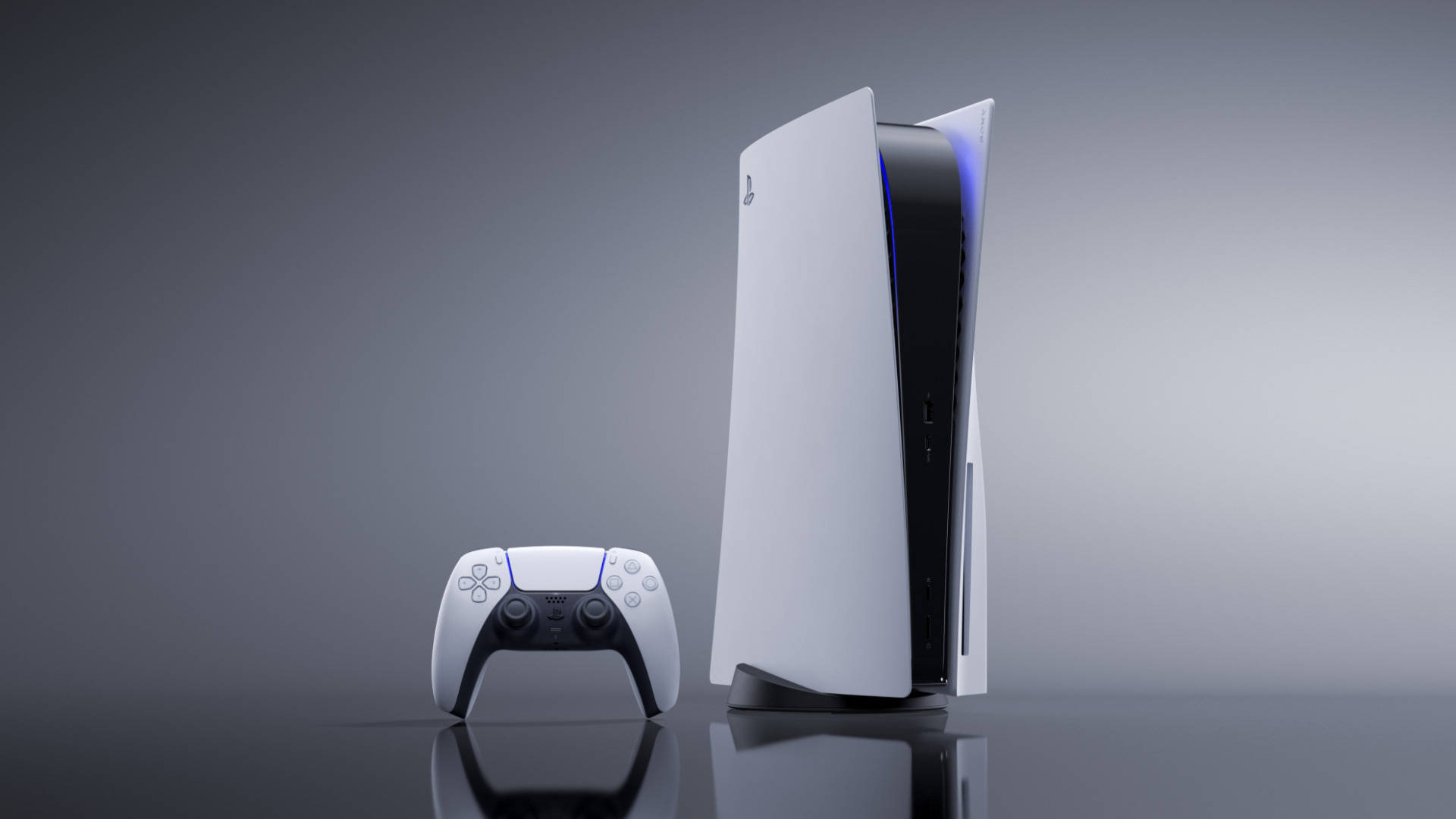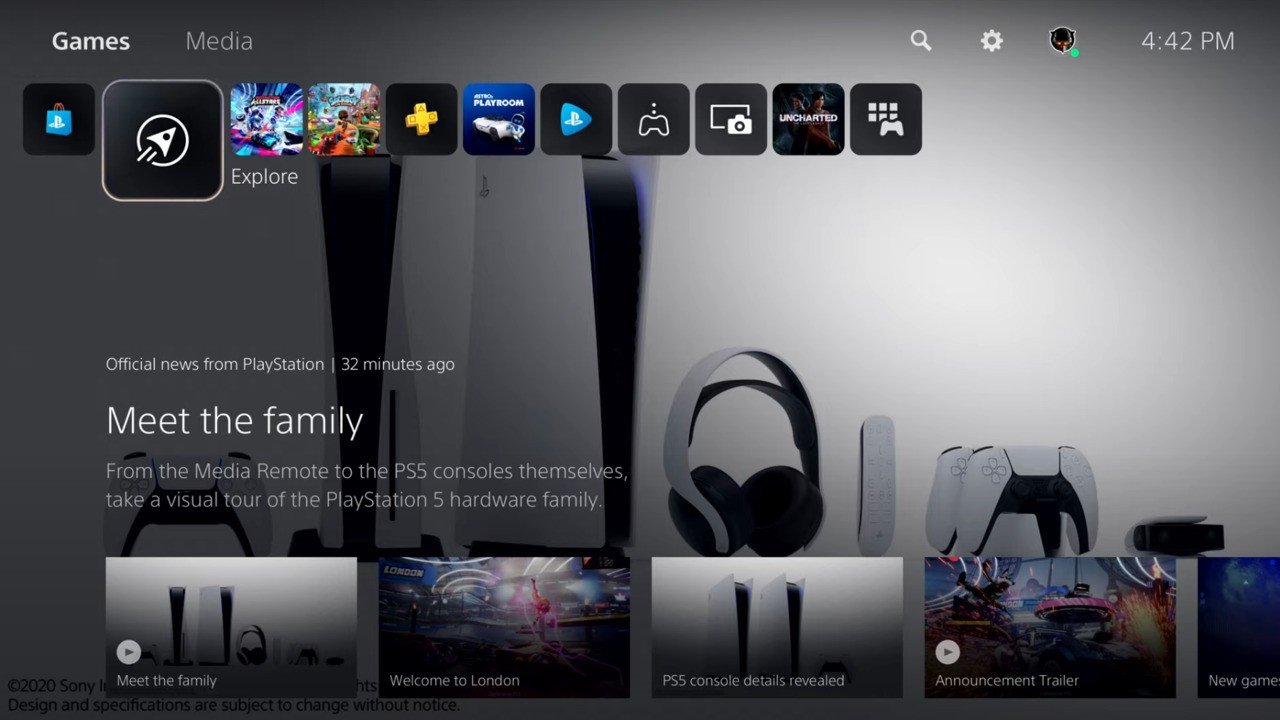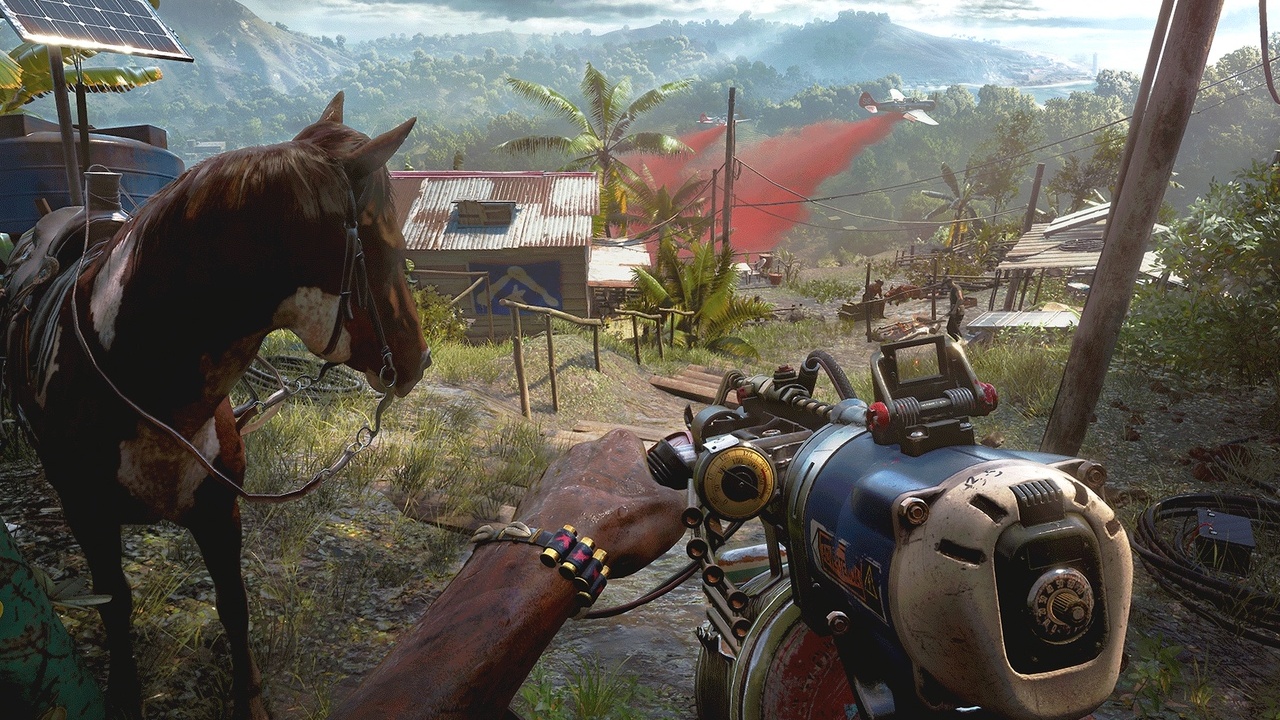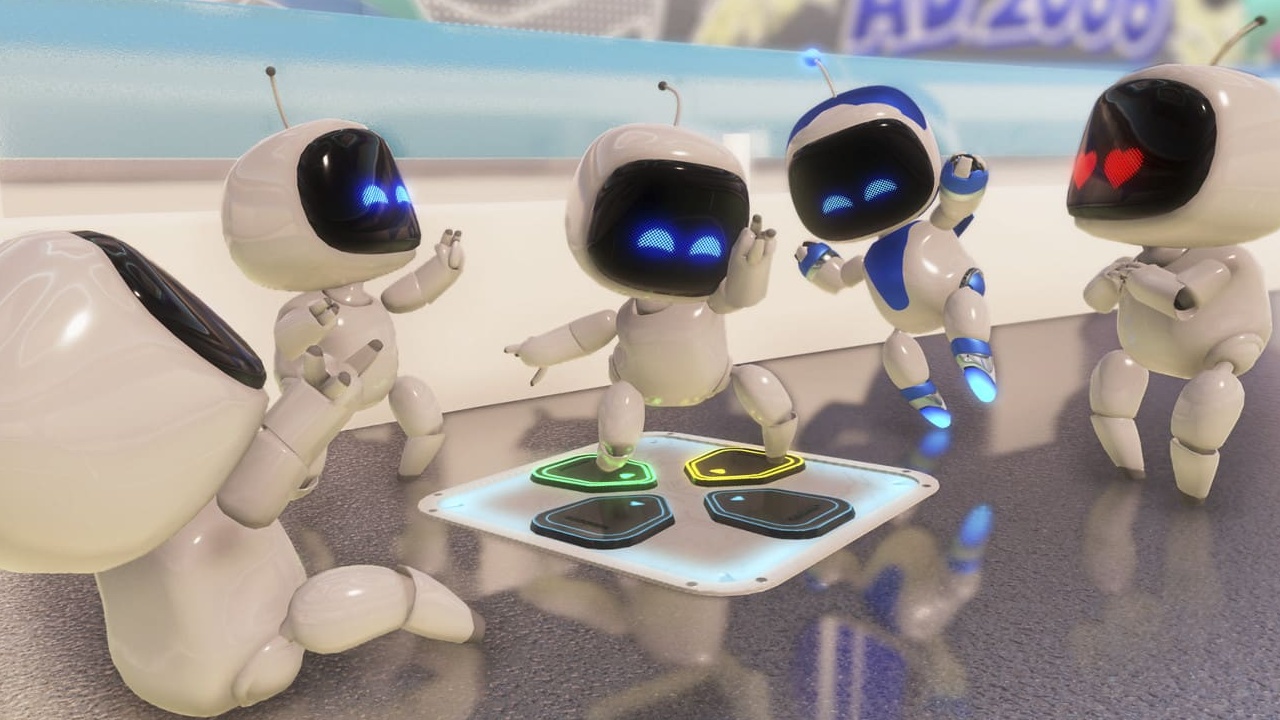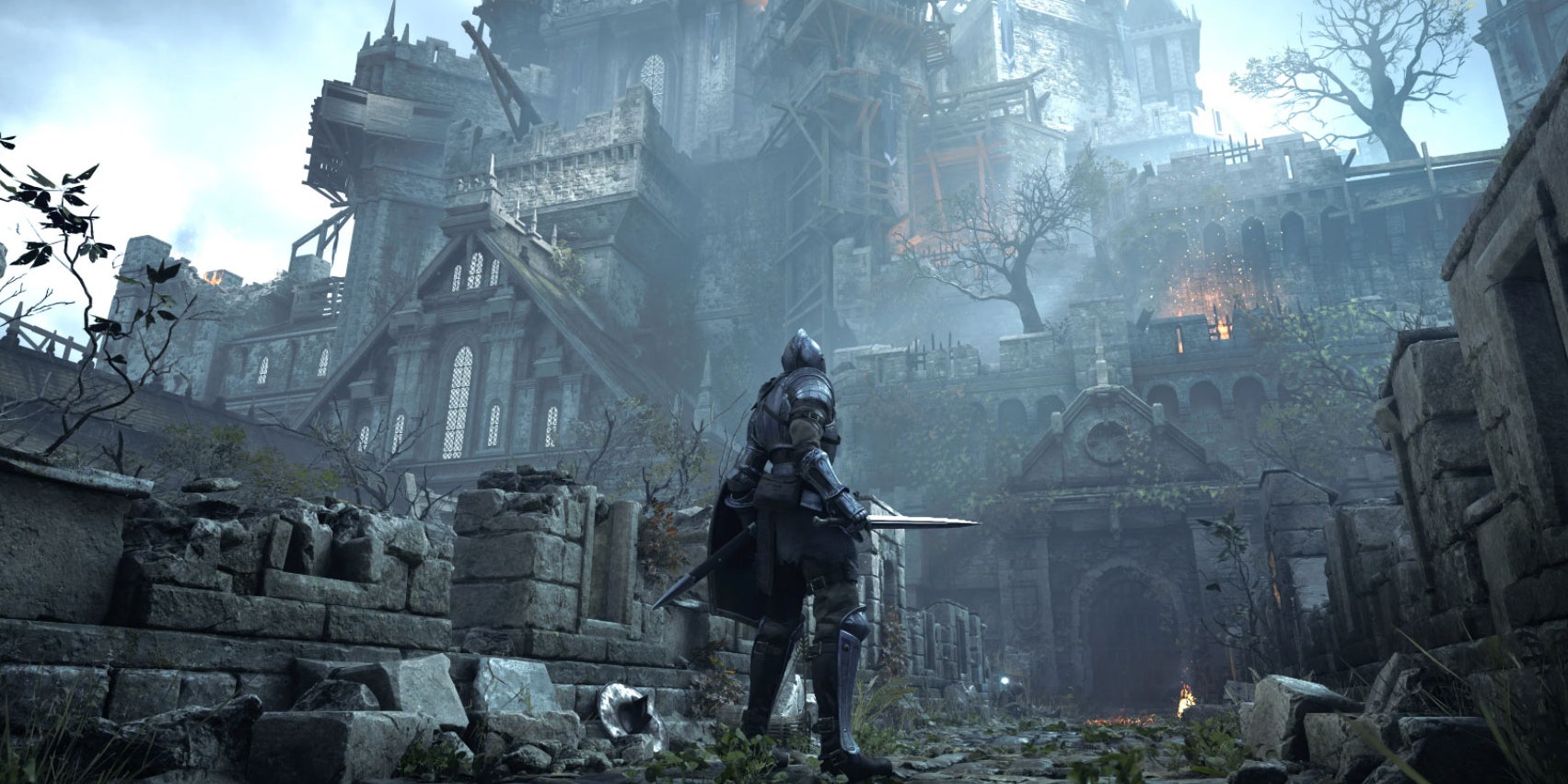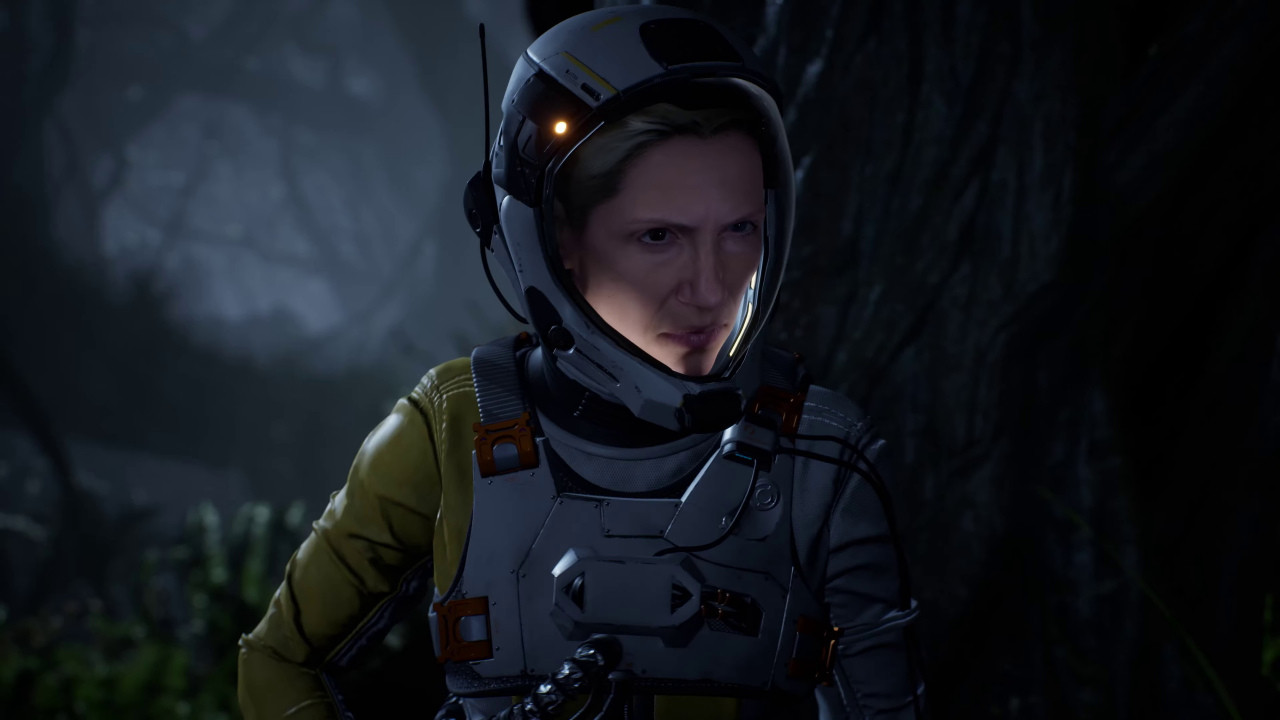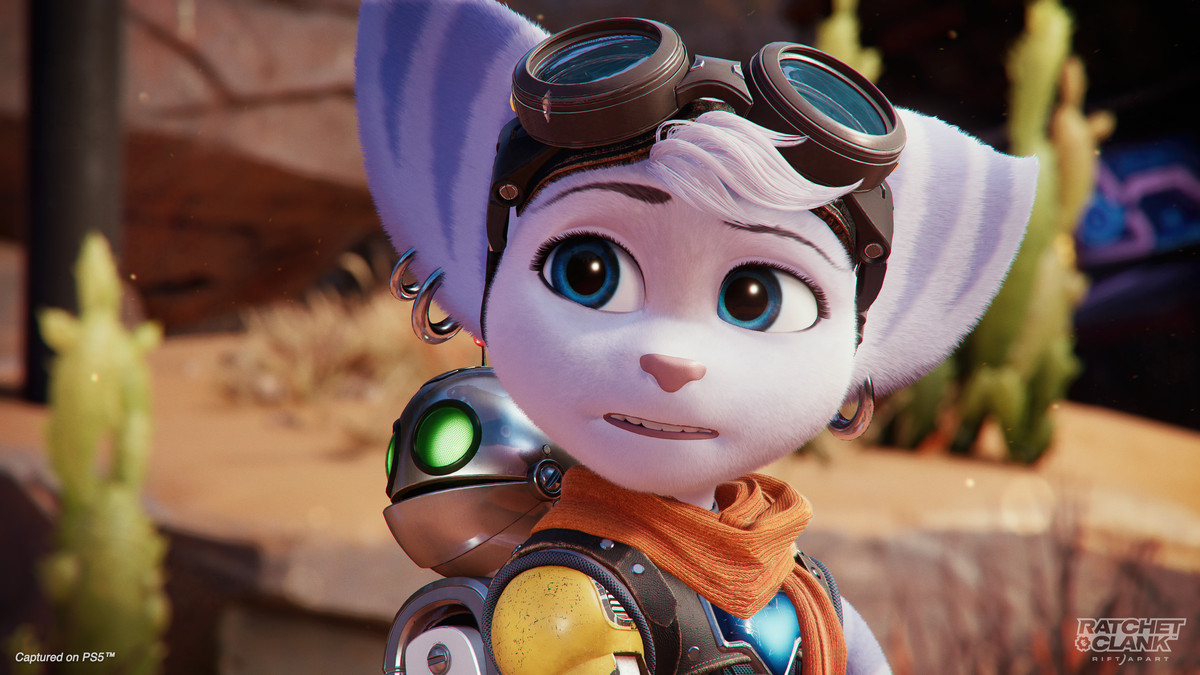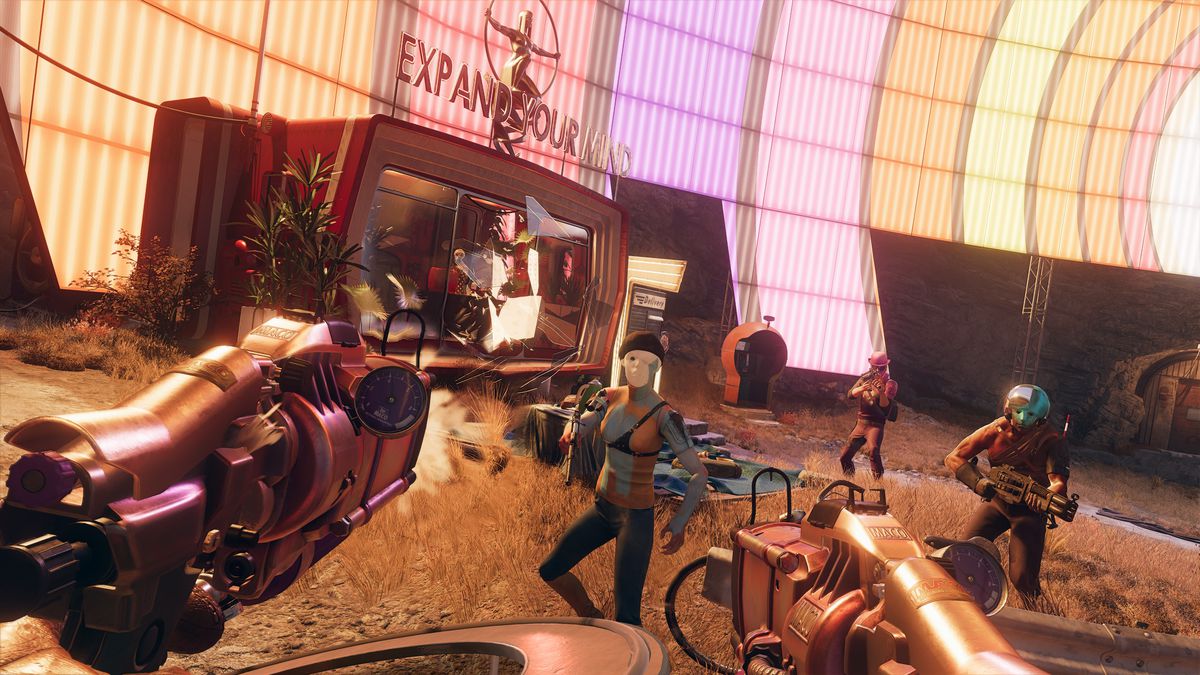It’s been almost a year since my fateful eight-hour drive to acquire my PlayStation 5 (PS5). After this significant period of time, I can reflect on every aspect of my experience in a somewhat objective manner, which means I can finally answer the question that joggled around my head during the eight-hour car drive: “was it worth it?”
Instead of reflecting on my eight-hour PS5 journey, which got deleted from the intro, let’s dive right into the specific pro and cons of the PS5 in my year end review of Sony’s newest console.
The Box
It’s hard to avoid making Xbox comparisons when the oddly shaped PS5 is sitting right next to the sleeker Xbox Series S in my entertainment center. It’s not unreasonable to assume that Sony intended for the PS5 to look futuristic while Microsoft chose a simplistic, streamlined approach. If you haven’t seen a PS5 in person, it looks nearly as awkward as it does on your computer screen – two curved white plates sandwich the black console like a prop from a cheesy sci-fi movie.
Regardless of your gaming setup, (unless you hide the console behind the TV) the PS5 calls attention to itself, making it the focal point of any entertainment center. Every time I look at the PS5 laying horizontally on my black plexiglass shelf, it’s a rambunctious reminder that the future of video games is here. Also, the PS5 LED strip on the console’s edges is a welcome addition, as the iconic PlayStation blue shine on the white plates of the console.
For me, this small feature goes a long way in adding some stylish pizzazz to the box, only intensifying its over-the-top design. So, even though it may not be as slick as the Series S it has to share a shelf with, I do appreciate the PS5’s outrageously eye-catching design.
Its practicality beyond just visual ecstatic is a little more difficult to get behind. First of all, its bulky and cumbersome nature makes appropriate placement a game in and of itself. The console looks much better vertically but it is difficult to find anything that can hold the 15 inch machine, four inches taller than the Xbox Series X. Most people, like me, have to compromise by placing the console horizontally, which requires the use of a small, black stand, otherwise, the console will awkwardly lay slanted on the shelf, or wherever it’s placed. It makes you envy the simplicity of a box design where it doesn’t require careful calculations just to place the dang thing on the shelf.
OK, I may be over exaggerating, but it’s still true that the PS5 is a cumbersome device, especially when it comes to portability. Sometimes I have to move the PS5 to a different part of the house for whatever reason, which is an incommodious maneuver for the reasons mentioned above. It’s honestly one reason I’m thankful to have the Series S. The little baby console puts the PS5 to shame when it comes to portability. All of this is to say that once the PS5 finds a home, and doesn’t need to be moved, it will be an awesome, albeit showy addition to any setup.
The Controller
Before the PlayStation 5 made its way to the masses, the press and influencers alike hyped up the new DualSense controller to a great extent, even comparing it to some of the greatest sensual experiences a human can achieve. The DualSense is, by far, the best controller Sony has ever created and it’s finally on par with the ever so solid competition of Microsoft.
So, in a way, I see where the hype came from, but it did place the DualSense on this unattainable pedestal, giving people a false aspiration for Sony’s newest creation. In this light, I was disappointed with the DualSense, but that’s not the controller’s fault. It is for this reason that I am glad to be writing this review a year after the hype cycle so I can share my thoughts outside of the internet’s peak of influence.
Much like the console itself, the controller is both quirky and eye-catching, which isn’t a bad thing, in fact, it helps to distinguish the PS5 from anything else on the market. The DualSense fits the gaudy, futuristic design of the console perfectly, sporting a white plated top half and a black underbelly around the analog sticks. It’s not an attractive, or sleek controller but it’s definitely an eye-catching piece that shouts: “This is the future!” Also, just like the LED strip on the console, the edges of the touchscreen can light up for both a cool effect and practical usage. The number of glowing dots on the bottom of the touchscreen indicates what player has the controller (player 1, player 2, etc.) and the color of the lights may indicate a specific action in the game. This is a significant improvement over the PlayStation 4’s light, which was excessively bright and drained too much energy, emitted from a large area on its front.
From a pure functionality standpoint, my two DualSense controllers have remained in peak conditions, avoiding the encroaching terror of analog drift. That was a little surprising because every PlayStation controller I’ve owned (except the DualSense that is) has broken in some form or another, whether its triggers jamming up or the rubber tearing off of the sticks. So far, my DualSense controllers have avoided such a fate and have consistently provided stable button clicks for my fingers and a comfy placement for my palms. Not to mention the controller is surprisingly light, despite all the technology under the hood, ensuring that my hands feel comfy even after those five hour Returnal runs.
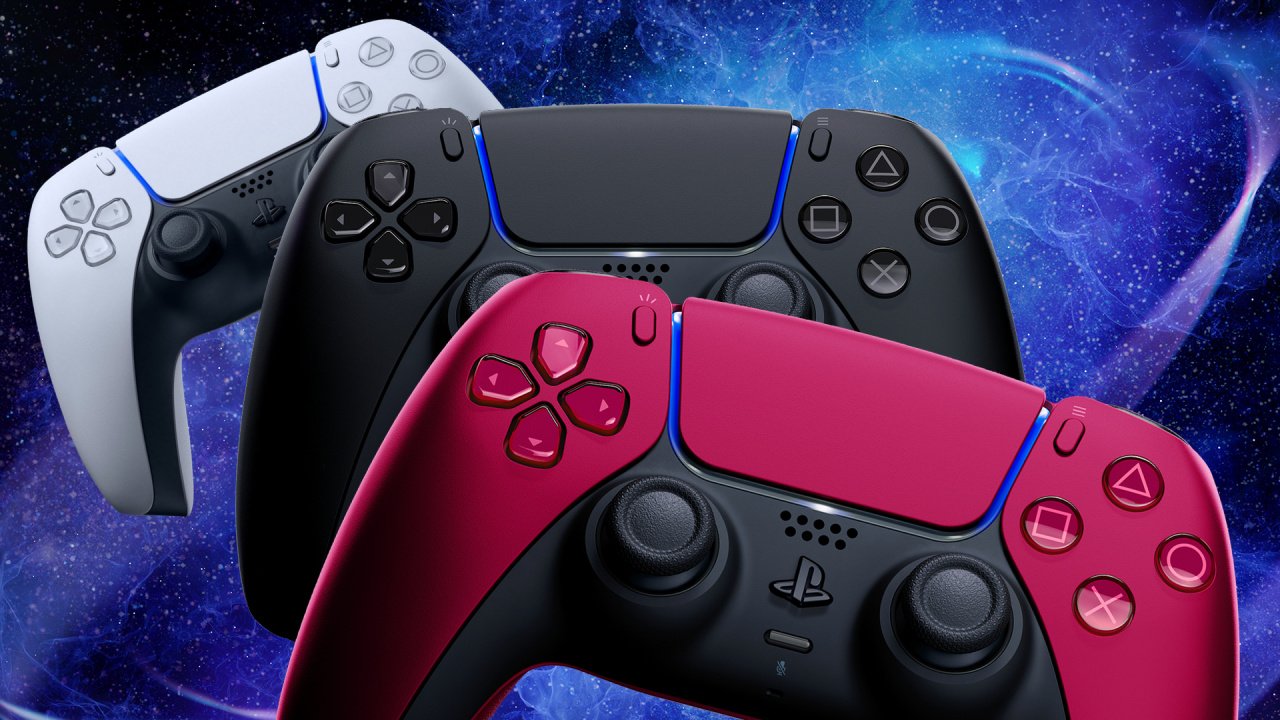
I’ve uttered on about the classic controller tropes for too long and buried the lead, which is, of course, the haptic feedback and adaptive triggers. It’s true that I wasn’t vibrated to another dimension like the majority of the press wanted me to think, but it was an impressive display that proved it was more than a month long gimmick. I was impressed with how these features were implemented in Astro’s Playroom, and still just as impressed when I fired a full-auto machine gun in Far Cry 6.
Since Astro’s Playroom was built around the haptic design, it’s the most comprehensive showcase for these features. You can feel the trigger joggle and resist when you pull a string (the same thing for Sackboy’s Big Adventure) while the sound of irking tension emits from the controller’s microphone. Additionally, the haptics will vibrate from left to right as Astro runs across the title screen letters. Astro’s Playroom may have given us the DualSense‘s best performance, but that’s not to say future games did not capitalize on the technology.
Both Ratchet & Clank: Rift Apart and Returnal utilize different firing methods based on how hard you press the trigger. This implementation works for other games as well. You can use the resistance of the trigger to indicate the appropriate time to launch an arrow in the Pathless and you can feel Miles Morales’ electricity tingle through the controller. I’m basically here to say that the unique DualSense features are not a run and done deal but, instead, they will be implemented in games, both first and third party going forward.
If it’s not clear already, the DualSense is a good controller. It may not feel as sturdy as an Xbox Series X controller but its light weight, comfortable feel, and unique functionality may give it the edge for the first time in history. The only downside is the short battery life, making me constantly exercise by getting off my chair and plugging in the cable. I guess that’s the price you pay when your controller is bedazzled up with lights.
User Interface
The PS5 User Interface (UI) is not good thanks to some small inconveniences that turn into big annoyances. Several marketed features did not deliver and some odd setting placements make what should be simple navigation a hassle even a year after launch. The PS5 has two horizontal toolbars. One is the main bar that holds your most recent games, the PlayStation Store, the media gallery and more. The smaller menu pops up near the bottom of the screen when you press the PlayStation button.
Through this second bar, you can look through your notifications, chats, profile, and other helpful settings. In spite of its intention as an easy way to access settings during gameplay, this second bar has proven to be more of a nuisance than a useful tool. I rarely used it during gameplay, except to adjust headset volume or check the charge on my controller (it was admittedly useful to navigate to these specific settings without exiting the game), but I mostly found that it took away features that should have been easily accessible on the main toolbar/home screen, namely the power button.
It’s so strange that you can’t message your friends or check notifications through the home screen without bringing up this extra toolbar. It seems like an unneeded step that I’ve yet to get used to. This is most evident with the absence of the power button on the home screen; what an odd design choice! The system can’t even be turned off by holding down the PlayStation button. I shouldn’t have to explain the inconvenience and just how downright strange this design choice is. These issues were bothersome, but they were heightened after turning on the Xbox and navigating its simple and convenient UI.
It’s so much better not because of some superior design methods, but because Xbox follows the basic principles of a good UI experience. Before I go on much of a rant, let’s move on to another topic of equal annoyance. When you first turn on the PS5 and enter into the main screen you are greeted with an advertisement… I kid you not. As I write this review, I can look at my TV to see an ad for Sim’s 4 that says “Help Sims Love Again” plastered across the PS5 menu. The PS5 automatically opens to the “Explore” section of the main toolbar, an incredibly useless tab designed to make users spend more money.
The one time I was happy to see this tab was when Fortnite advertised the Master Chief skin, meaning every time you turned on your PS5, the Xbox icon was there to greet you. Besides that humorous encounter, I skipped right past the Explore tab, which can’t be moved or deleted off the home screen. As a quick aside, this also points out a great fault in the PS5’s UI – the lack of customizability. You can’t even rearrange the games that appear on the home screen so that your favorites appear first in the line or move older ones off the screen without deleting them.
On the left of the “Explore” section is the PlayStation Store, which is integrated into the home screen, so you don’t have to load into a separate application as you would on the PS4. This small tweak, along with the upgraded power of the PS5, negates notorious lag issues from the previous store and, instead, packs in a seamless, and easy online shopping experience.
The rest of the main toolbar displays your recent games and your media gallery, which stores captured 4K60 HDR videos from a simple press of the controller’s create button. The setup here is serviceable, but there are several features that seem rather pointless. The activity card system, which appears after a press of the PlayStation button, serves as a guide for your current game. Each card highlights activities in your game and shows the progress of the said activity.
They also allow you to jump to a specific spot in the game, but these were a waste of space because most games already have a load feature – at least I hope they do. There is not really a difference between launching a game through a card or launching the game itself. To add insult to injury, not every game supports these activity cards, making them even more useless than they already are. I used the cards only once when I was attempting to platinum Ratchet and Clank Rift: Apart since they provide valuable information about how many Craiggerbears I had left to find, even then the information wasn’t entirely necessary.
The switcher, on the other hand, is an underutilized feature that lets you switch (how clever) between different applications. It’s odd how no one is talking about this when it works similarly to the beloved quick resume on the Xbox. Sure the latter is a bit faster and fluid, but the PlayStation version still gets the job done. I can be rewatching “Naruto Shippuden” on Hulu until a prolonged and tedious flashback scene interrupts a fight, then automatically switch over to Far Cry 6 and start playing from my last save.
Ultimately, the PS5 UI harnesses some smart and helpful features (the PS Store and Switcher) that are brought down by weird disbursement of settings across two toolbars. At the same time, I have to give Sony some credit for slowly adding improvements during this first year of the console’s life cycle. These include adding a handy “deals” category to the PlayStation Store, allowing players to pick what version of the game (PS4 or PS5) they want to download, and displaying trophies vertically so the full trophy description can be read. It’s pretty obvious that late adopters will experience a much better UI than the one we have now.
PlayStation Plus
While competing with Xbox Live services, PlayStation Plus achieved record-breaking numbers (47.4 million to be exact) when PS5 first launched, a significant step for the service that provides substantial content for its growing user base…at least at first. The PS5 launched with the PlayStation Plus Collection, which gathered 10 of PlayStation’s most iconic games including The Last of Us, God of War, Batman Arkham Knight, and Infamous: Second Son. New PlayStation members got a great deal with this collection, especially since there was no additional cost, and there was hope that this would kickstart a Game Pass-esque integration. Sadly, though, the PlayStation Plus Collection just sat in the corner of the PS5 UI gathering dust – it was never implemented on and nothing new was added to it.
Suffice it to say, there were many excellent games in the collection but, after you’ve played all the ones you want, the sweet bonus quickly becomes inconsequential. I, for instance, never used the PlayStation Plus Collection (though I was happy that newcomers could experience a volley of excellent games in one place) because the 10 titles included were older PS4 games that I’ve already played. Also, even if you’re new to PlayStation, the collection is nothing more than an outdated welcome package that will only stay relevant for the first few months.
The second biggest PlayStation Plus offering, besides the opportunity for online gameplay, is the monthly free games, usually consisting of a PS5 title, a couple of PS4 titles, and maybe a virtual reality game for good measure. During the end of 2020 and the beginning of 2021, the quality of free games offered was astonishingly generous, which marked a positive trend as day one launches entered the service. Bugsnax was a highly anticipated indie game about eating food-shaped bugs that turned into a free download for PlayStation Plus subscribers, a huge win since the game might have been too strange for some consumers.
Despite the strange premise, Bugsnax became a champion of the PS5 launch, boasting an addictive collectathon back topped by an ominous and creepy tone. Additionally, PlayStation Plus offered other day one releases such as Destruction All-Stars (the destruction derby game everyone forgot about) Oddworld Soulstorm 2, and Maquette.
Even though some of those games were subpar (looking at you Oddworld Soulstorm 2), I was impressed with Sony’s insistence on putting new games on a service traditionally known for including older titles. I was confident that Sony would use this strong start to launch PlayStation Plus into a new and better era, one where more substantial, day one releases were offered for free and the PlayStation Plus Collection would steadily grow.
However, the head start slowed to a crawl when older, or smaller games started dominating the monthly offerings. Games like Tennis World Tour 2, Plants vs. Zombies: Battle for Neighborville, and Hell Let Loose may not be terrible but their additions, in no way, strengthen the PlayStation Plus library. It got to the point where I canceled my subscription since the constant quality releases on Game Pass made PlayStation Plus a waste of money in comparison.
In a year where I thought the PlayStation subscription service would change for the better, and reach strides to that of Game Pass, it whimpered out, succumbing to its old ways of releasing mundane games, barring the few standout releases. This is obviously a me problem since I wanted more and simply didn’t get it, but, on the other hand, Sony must bolster their online offering soon or risk losing more and more people, like me, over Game Pass.
Performance
PlayStation 5 games can run at up to 4K resolution and 120 frames per second, though few of them actually reach this benchmark. Instead, many games offer options to pick and choose your graphical settings. The resolution or ray-tracing will suffer slightly if you need a high frame rate, and the converse is true. Personally, I usually choose the option for optimal frame rate since this is where I see the most improvement over the previous generation. The smoother movements of the characters have a huge impact on both gameplay precision and on reducing muddled visuals without sacrificing too much resolution. Of course, some developers can hit that pristine state of 4K 60 such as Devil May Cry 5: Special Edition, Deathloop, Far Cry 6, and many others.
Throughout my first year with the PS5, I can gladly say that its graphical capabilities deliver on the multiple promises of this generation, though it’s not the biggest graphical jump we’ve seen thus far. Another big selling point was the Solid State Drive and instant loading times, a feature I thought was never coming to fruition… but I’m happy to be wrong. Every single game I’ve played on the PS5 either loads instantly or within seconds. In fact, this amazing quality of life upgrade changed the way I play games.
Before, I invested in one game at a time, but now I instantly switch between and load into multiple games during a single session. Perhaps, I get killed by Julianna, ending a successful run in Deathloop, and decide to instantly switch over to Far Cry 6 where I release some frustration through its chaotic gameplay. Load times are no joke, allowing you to enter and exit a game without the interruption of social media or the dissatisfaction of a load screen. For all the good mentioned above, there are a few minor issues that are easy to get over but still worth mentioning.
For one, it’s not completely silent as advertised. It’s nothing like the PS4’s jet engine that wakes up everyone in the house, but the PS5 does make significant noise when you turn it on, launch a game, or initiate an update. Since the console is quickly silenced for most of a play session, only speaking on the occasions noted above, this isn’t too troubling. Really, the only other significant issue with is the limited storage space, which comes out to 667.2 GB of free space, hardly enough for a dedicated gamer. As there was no external storage option until the M.2 SSD expansion became available in July, I found myself constantly deleting games to free up some space. For the most part, though, the PS5 is a powerful and reliable machine that has satisfied my need for top-notch console gaming throughout its first year. That wouldn’t account for anything if there weren’t any games to support it and luckily, that’s far from the case.
The Games
The PlayStation’s UI issues and PlayStation Plus offerings are small dents in its armor when there are several game of the year-worthy experiences backing it up. That is why I’m a PlayStation fan after all. The PS5’s first year had a strong amalgamation of games ranging from exclusives to, for the first time ever, backward compatible PS4 games. For now, we’ll talk about the latter and take a little dive into how games run on this powerful console.
Cross-generational games
Let’s take two of the biggest PS4 games as our primary examples of cross-compatibility and graphical upgrades – The Last of Us Part 2 and God of War. The former follows Ellie in a melancholy and violent pursuit for revenge. As one of the best games on the PS4, it was difficult to imagine any significant improvements for the PS5 version. Besides, the game captured every inch of Ellie’s facial expressions, even capturing small tremors to express the emotional weight of a traumatic incident. Not to mention every detail of the wide open, overgrown remains of Seattle.
From a sheer visual standpoint, there is not much difference between the two versions of the game, given that the original already looked so good. The biggest improvements come in the form of frame rate, upgrading from 30 to a near solid 60. The Last of Us is notoriously known for its wobbly shooting mechanics in high stress environments, which is where a high FPS comes in handy. Now Ellie can run, snap necks, and shoot multiple enemies without the smallest drop in frame rate, making the game a little easier and smoother.
Most impressively, this 60 FPS gameplay rarely drops throughout the game, even in more intense missions where several enemies and particle effects bombard the screen. The most impressive mission, as captured by Digital Foundry, was a boss fight in the basement of a disheveled hospital. The increased particle effect intensifies the number of infected spores in the air, and fire reflections shimmer off the flooded floors. The fact that the PS5 was able to upgrade The Last of Us Part 2 at all is a testament to its power.
In my opinion, God of War may be the only PS4 game that could stand up to The Last of Us Part 2 from both a gameplay and story perspective. It’s also another PS4 game that received upgrades for the current generation of gaming. The masterpiece by Sony Santa Monica follows Kratos, the angry God of War turned caring father, as he and his son, Atreus, explore Norse Mythology in honor of a final wish from a mother/wife. As with The Last of Us Part 2, God of War already has some amazing visuals, but the frame rate is the biggest improvement.
That doesn’t mean the resolution and general visuals didn’t see any upgrades at all. With the 4K checkerboard resolution, the textures and details on Kratos himself are more clear and less rigid. On the other hand, the upgraded frame rate (60 FPS) gives Kratos’ swirling ax maneuvers a sense of polish and a less blocky nature. Lastly, load times are an important function of God of War since Sony Santa Monica boasted a seamless, single camera shot throughout the whole game. Once you load in, which takes the PS5 owner 22 seconds, you can expect many disguised load screens that technically don’t break the single camera shot rule. These masked screens, such as traveling through a portal for fast travel, are much faster on the PS5, putting Kratos back into action before the PS4 Kratos can even open the fast travel door.
There are several other stellar cross-generational games to play on the PS5 including Ghost of Tsushima, Marvel’s Spider-Man: Miles Morales, Marvel’s Spider-Man, Kena: Bridge of Spirits, Death Stranding, and Sackboy: A Big Adventure. Of course, there were complaints about these games not being truly next generation but the PS5 has a solid group of exclusives under its belt as well. The five PS5 exclusives (not counting Destruction All-Stars because no one cares about Destruction All-Stars) are all top-notch games that immediately destroy any measly arguments that the PS5 doesn’t have any true exclusives.
Astro’s Playroom
Astro’s Playroom is a free platforming game that explores the rich history of PlayStation, which is a generous offer considering how great the game is. In this clever showcase for the DualSense controller, the cute blue and white robot explores worlds filled with PlayStation easter eggs. Although it seems like a cheesy gimmick, this is actually a full-fledged game that had enough fun energy to push me toward platinum.
Barring the DualSense implementation, the first thing I noticed was the fun, optimistic, and cute tone as Astro Bot waddles across the world and eagerly interacts with the environment. This cute energy echoes throughout the game’s diverse environments rather it be a bright beachside, lush jungle, or glistening ice caves. The countless PlayStation references, such as small robots replicating scenes from iconic video games only add to this fun atmosphere.
Not only is the game a delight, but the platforming controls are also precise and friendly allowing Astro to jump across precarious gaps with ease. Much like It Takes Two, on a much smaller scale, Astro’s Playroom constantly throws new mechanics at the player in order to substantiate these platforming elements. You can jump into a monkey outfit to climb up walls, shoot enemies with a ball launcher, and transform into a ball to roll around the stage.
This exhibit transported me down a nostalgic path while bringing me a new source of sweet memories. My first days with the PS5 will always be remembered as moments of bliss spent playing through the PlayStation playground that is Astro’s Playroom. This small game should not be disregarded as a mere gimmick but as an honored member of the PS5’s list of exclusives.
Demon’s Souls
From cute, easy platforming to difficult, violent combat, the PS5 couldn’t have launched with two more diverse games. A talented team at Bluepoint games remade Demon’s Souls, a game that launched the aggressive and passionate following of the Souls genre. Most of the gameplay was left intact, but several small changes brought Demon’s Souls into the new era. The audio and soundtrack was recorded for a cleaner experience worthy of the PS5’s 3D audio functionality.
In addition, your character can now roll in any direction, unlike the original where it was limited to four directions. Changes like these made Demon’s Souls not only bearable but also a shining example of what the next generation is capable of. As a new PS5 owner, it was the game I used to brag about my new console. It was beautiful from the dungeon wall textures to the foggy, grey skies. Nothing else on consoles could stand up to it, making Demon’s Souls the prettiest console game for a brief moment in history. Not only that, but the 60 FPS made precision in combat easier to execute and the fast load times lessened the pain of death.
All of this praise comes from a strange place. A place of an objective observer who has never fully entered the Souls genre. I beat Bloodborne, with the help of gracious friends, and made it to the Armor Spider in Demon’s Souls. That’s an early boss fight but I couldn’t bring myself to continue with the game. I was slowed down by webs and burned to a crisp too many times to count. Even with the frustrating experience, I can see why people enjoy these games. The sense of reward and self-gratification is unmatched by any other gaming experience.
With that being said, I appreciate the work Bluepoint did to bring Demon’s Souls back to life. It was a great addition to the PS5 launch and an admirable addition to the PS5 exclusive library. Maybe, one day, I’ll put on my big boy pants and beat that dang spider. The allure to go back has never really left.
Returnal
Spoilers…Returnal might be my game of the year. I fell in love with the relentlessly satisfying gameplay loop and smart progression of both the story and the player’s skillset. I raved about Returnal in Gaming Instinct’s review, but I’ll write a brief summary here. A crash landing on an ever-shifting planet forces Selene, our protagonist, to navigate a dangerous world to learn more about the planet but ends up learning more about herself in the process.
This is a roguelike where death means waking up from the crash ship and starting your journey anew. Returnal relies on its addictive gameplay loop to keep players engaged and it worked; I never felt the desire to put my controller down. Death was always my fault, a mistake made by the player, not some unfair trickery from the game, which ultimately speaks to Returnal’s precise controls and design. You are constantly moving to avoid the deadly projectiles of tentacle-based monsters in an arcade bullet hell experience turned triple-A, third-person action game.
The only criticism is that of the long run times. A single life can last anywhere from 30 minutes to 5 hours and without a save system, Returnal was somewhat unplayable for busy gamers. The only solution, at the time, was to put the PS5 in rest mode and risk an untimely update that could potentially turn the system off. Luckily, Housemarque updated Returnal and added a suspend option, granting the game a much wider appeal. Now is the best time to jump into one of the greatest games of the year and uncover the mystery of Atropos.
Ratchet and Clank: Rift Apart
Though dimension shifting was advertised as the key component of Ratchet & Clank: Rift Apart, showcasing the power of the PS5’s SSD, its implementation was never as profound as one may expect. Backing up a bit, Ratchet & Clank returned with a world-hopping adventure that harkened back to the mascot platforming days. This time around, Dr. Nefarious stole the Dimensionator and traveled to an alternative dimension where he was the ruler. The contrivance resulted in a gameplay loop that involved different usage of dimension shifting portals.
The portals were used abundantly, for sure, but instantly shifting in between worlds was saved for a few cinematic moments and that’s it. This was somewhat disappointing but the game itself was still a fun adventure that will place in my top 10 list this year. Ratchet could use the rift tether, a glorified grappling hook, to instantly teleport across the battlefield while the contrivance also instigated diverse enemy encounters as numerous enemies could pop through a rift.
With all these little mechanics to gameplay, Rift Apart managed to be a fun, action-packed experience filled with charm. Part of that fun came from experimenting with various weaponry such as the Topiary Sprinkler and the Negatron Collider. Switching weapons during the heat of combat was part of the fun. For instance, the Topiary Sprinker could tie up by a heap of plants making them stationary targets for the Negatron Collider’s powerful blue beam.
With all this in mind, I was, surprisingly, most impressed by Insomniac’s stellar trophy list. Oftentimes, I give up on trophies, overwhelmed by the tedious nature of undergoing mundane tasks, but the collectibles in Rift Apart were rather easy to find while giving me an excuse to spend more time in the beautiful, ray-traced world. Some games are so fun, that you look for any excuse to continue playing after it’s done and Rift Apart’s trophy list gave me that excuse. Ultimately, the portal mechanic wasn’t as extreme as advertised, but that, in no way, dampened my experience with Rift Apart.
Deathloop
The biggest praise I can give Deathloop is its brilliant design, which is unlike any other game out there. A man named Colt wakes up in a time loop (we’ve all been there) and quickly realizes that he must assassinate eight visionaries at the same time to escape. You will discover new information about the visionaries as you advance through each stage, over and over again. Early on in the game, you discover that two visionaries meet up for some smooching in the evening, allowing you to take out two at once.
As for the others, that’s a puzzle worth figuring out. It took me a while to get into Deathloop, it was confusing and stealth always erupted into unsatisfying chaos. It wasn’t until I got out of the long tutorial and found my first power that things started to click. That’s when I started to understand the goal and get a glimpse of how to get there. Additionally, the powers go a long way in turning combat from an unforgiving bore to a power fantasy playground.
One of your abilities allows you to link together enemies so that a single graphic head snap causes everyone else to go down. Another one lets you teleport across the map, like blink from Dishonored, allowing you to reach high places easily or get set up for a stealth kill. After I understood the fun to be had, it was difficult to escape the loop for it kept on calling me back. Deathloop also has an online component where players can invade your game as the character, Julianna. Her job is to hunt and kill Colt while the latter tries to escape or prove he is the predator, not the prey. This online interruption can get annoying when you’re in the middle of a successful run, but it can also cause some heart-pounding tension as you watch every corner for the eventual attack.
Even when I was killed by Julianna, that didn’t disincentivize me from jumping back into the loop, because I knew new discoveries were waiting. Actually, as I write this, I’m tempted to close my laptop, turn on my PS5 and continue the convoluted assassination narrative of Deathloop.
Final Verdict
There’s no doubt that almost every PS5 exclusive is a top-notch gaming experience. Sony has continued its reputation for being the king of exclusivity, which is a bad thing for social gatherings but a good thing for a business. If you don’t have a PS5, then you are missing out on some of the best games of the year, plain and simple. These games are Sony’s saving grace, as they always have been. They are the soldiers defending against the better subscription service and an easier user experience of the Xbox Series X. Of course, these misgivings do not hamper the PS5 hardware itself, which offers one of the most solid console gaming experiences on the market.
So this 5795-word review brought us to this point. As I sit in my room and look at the gaudy console sitting under my TV, it brings me back to that fateful eight-hour trip.
I think it was worth it. After a year with the PS5, I can easily give it an 8.5 out of 10.
Stay tuned at Gaming Instincts via Twitter, YouTube, Instagram, and Facebook for more gaming news.



